Matador Network's Blog, page 762
October 21, 2020
Winter guide to West Yellowstone, MT
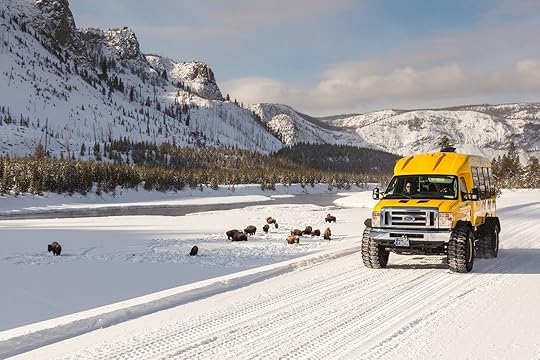
The ultimate winter guide to West Yellowstone, MT
By: Jacqueline Kehoe
Photo: West Yellowstone
Imagine a high, wintery landscape where bison, moose, wolves, and elk roam free. Fresh snowmobiling trails lead to hidden cabins, deep in the firs and spruce of a nearly two-million-acre national forest. Six mountain ranges topping 12,000 feet lend their slopes to a vast network of ski runs and snowshoeing trails, and back in town, the fire is always roaring.
For a winter vacation this supreme, your destination could only be West Yellowstone, Montana. Sitting just outside the western entrance of Yellowstone National Park, the town of West Yellowstone is the region’s ultimate basecamp for winter adventure. Summer crowds gone, the land opens up to all those looking for solitude, adrenaline, and pristine nature.
Of course, this winter it’s essential to explore responsibly and be Montana Aware: check for closures before you head out, have a backup plan just in case, wear your mask, and keep six feet from others at all times. For those ready and willing to respect Montana’s landscapes, its wildlife, and its people, West Yellowstone is the ticket to your greatest winter trip yet. Here’s what’s in store.
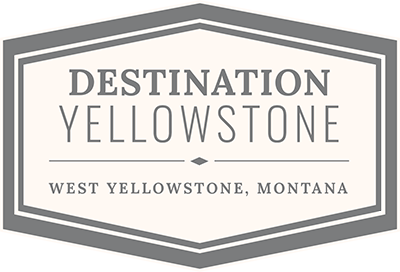
This guide is proudly produced in partnership with Destination Yellowstone.
Finding silence on the snow
Photo: Jagcz / Dreamstime.com
Photo: Pixelife / Dreamstime.com
Pull up at 100 South Geyser Street in West Yellowstone and you’ll see a wooden archway that reads “Rendezvous Ski Trails.” From here, you can head out on an 18-mile adventure through dense forests of lodgepole pine, open meadows, and rolling hills at 6,800 feet. The trails — open to both snowshoers and Nordic skiers — ripple through Gallatin National Forest, just west of the national park.
The pet-friendly five-mile Boundary Trail is another great trek, roughly paralleling the western border of the park to Baker’s Hole Campground. There’s also the Riverside Trail, a six-mile jaunt following the Madison River. Both are accessible from town and have the potential for a lot of wildlife sightings.
Note: The area ski trails require a daily or seasonal pass, available at the Hebgen Lake Ranger District Office, the West Yellowstone Chamber of Commerce, Freeheel and Wheel (rentals and lessons found here as well), and at the trailhead.
.map * {
font-family: sans-serif !important;
}
.info-window-link {
display: block;
margin-top: 10px;
padding: 3px 10px;
border-radius: 3px;
background-color: #0099ff;
color: white !important;
font-size: 12px;
text-align: center;
}
.info-window-link:hover {
text-decoration: none;
}
', { style: 'max-width:150px' });
$('').append(marker.title).appendTo(info);
if (marker.scroll_to) {
$('', {
class: 'info-window-link',
href: '#' marker.scroll_to,
}).append('Jump To').appendTo(info);
}
infoWindow.setContent(info[0].outerHTML);
infoWindow.open(map, target);
};
$('#' id).on('click', '.info-window-link', function(e) {
e.preventDefault();
var target = $(e.target).attr('href');
$('html, body').animate({ scrollTop: $(target).offset().top - 55 }, 1000);
});
for (var i = 0; i < markers.length; i ) {
var marker = markers[i];
if (marker.lat !== undefined && marker.lng !== undefined) {
var markerObject = {
map: map,
position: { lat: parseFloat(marker.lat), lng: parseFloat(marker.lng) },
animation: google.maps.Animation.DROP,
locationId: i,
}
if(atts.ordered !== undefined) {
markerObject.label = labels[labelIndex % labels.length];
}
if(marker.icon !== undefined) {
markerObject.icon = marker.icon;
}
var mapMarker = new google.maps.Marker(markerObject);
if (mapBounds) mapBounds.extend(mapMarker.getPosition());
if (marker.title) {
var infowindow = new google.maps.InfoWindow({ content: marker.title });
if (markers.length === 1) {
setTimeout(function() {
openInfoWindow(marker, mapMarker);
}, 1200);
}
google.maps.event.addListener(mapMarker, 'click', function() {
openInfoWindow(markers[this.locationId], this);
});
}
}
}
if (mapBounds) {
map.fitBounds(mapBounds, {top:boundPadding, right:boundPadding, left:boundPadding, bottom:boundPadding});
} else if (atts.zoom) {
map.setZoom(parseInt(atts.zoom));
} else {
map.setZoom(16);
}
});
});
Carving tracks and trails
Photo: Yellowstone National Park
Photo: Jon Cracroft
From West Yellowstone, arguably the Snowmobiling Capital of the US, you have access to 400 miles of snowmobile trails. That’s 400 miles blanketed with 150 inches of annual snowfall and surrounded by the Custer-Gallatin, Beaverhead-Deerlodge, and Caribou-Targhee National Forests. Trails spiderweb out from the center of town and straight into the backcountry wilderness.
The 20-mile Madison Arm Loop is suitable for beginners and gives riders stunning views of Hebgen Lake. South Plateau Trail and Horse Butte Loop are of similar length and difficulty, well known for their moose and bison sightings. Two Top Trail, on the other hand, is renowned for its “snow ghosts,” a winter phenomenon involving ice-caked trees. For a more difficult trek, consider the Lionhead Trail, 16 miles of backcountry powder lining the steeps slopes of the Continental Divide.
Note: For rentals and tours, check out this list of local outfitters.
.map * {
font-family: sans-serif !important;
}
.info-window-link {
display: block;
margin-top: 10px;
padding: 3px 10px;
border-radius: 3px;
background-color: #0099ff;
color: white !important;
font-size: 12px;
text-align: center;
}
.info-window-link:hover {
text-decoration: none;
}
', { style: 'max-width:150px' });
$('').append(marker.title).appendTo(info);
if (marker.scroll_to) {
$('', {
class: 'info-window-link',
href: '#' marker.scroll_to,
}).append('Jump To').appendTo(info);
}
infoWindow.setContent(info[0].outerHTML);
infoWindow.open(map, target);
};
$('#' id).on('click', '.info-window-link', function(e) {
e.preventDefault();
var target = $(e.target).attr('href');
$('html, body').animate({ scrollTop: $(target).offset().top - 55 }, 1000);
});
for (var i = 0; i < markers.length; i ) {
var marker = markers[i];
if (marker.lat !== undefined && marker.lng !== undefined) {
var markerObject = {
map: map,
position: { lat: parseFloat(marker.lat), lng: parseFloat(marker.lng) },
animation: google.maps.Animation.DROP,
locationId: i,
}
if(atts.ordered !== undefined) {
markerObject.label = labels[labelIndex % labels.length];
}
if(marker.icon !== undefined) {
markerObject.icon = marker.icon;
}
var mapMarker = new google.maps.Marker(markerObject);
if (mapBounds) mapBounds.extend(mapMarker.getPosition());
if (marker.title) {
var infowindow = new google.maps.InfoWindow({ content: marker.title });
if (markers.length === 1) {
setTimeout(function() {
openInfoWindow(marker, mapMarker);
}, 1200);
}
google.maps.event.addListener(mapMarker, 'click', function() {
openInfoWindow(markers[this.locationId], this);
});
}
}
}
if (mapBounds) {
map.fitBounds(mapBounds, {top:boundPadding, right:boundPadding, left:boundPadding, bottom:boundPadding});
} else if (atts.zoom) {
map.setZoom(parseInt(atts.zoom));
} else {
map.setZoom(16);
}
});
});
Hitting the slopes
Photo: Jeff Engerbretson / Big Sky Resort
Photo: Jeff Engerbretson / Big Sky Resort
When it comes to resort skiing, it can often feel like you have to pay sky-high prices for sky-high slopes — with inevitably long lines. But not in Southwestern Montana. Here, you’re in the Goldilocks zone: epic downhill skiing, more affordable rates, and wide-open runs without the crowds.
West Yellowstone is basecamp central for all the region’s best slopes, sitting an hour or two away from: Jackson Hole Mountain Resort, Bridger Bowl Ski Area, Big Sky Resort, and Grand Targhee Resort. Big Sky is the second-biggest resort in the nation, with six-mile-long runs across 6,000 acres — and it’s on the Ikon Pass. You could put together the most epic of ski-trip itineraries by mixing a few days at these big-name mountains with time spent back in West Yellowstone and the backcountry powder stashes of the surrounding national forests.
.map * {
font-family: sans-serif !important;
}
.info-window-link {
display: block;
margin-top: 10px;
padding: 3px 10px;
border-radius: 3px;
background-color: #0099ff;
color: white !important;
font-size: 12px;
text-align: center;
}
.info-window-link:hover {
text-decoration: none;
}
', { style: 'max-width:150px' });
$('').append(marker.title).appendTo(info);
if (marker.scroll_to) {
$('', {
class: 'info-window-link',
href: '#' marker.scroll_to,
}).append('Jump To').appendTo(info);
}
infoWindow.setContent(info[0].outerHTML);
infoWindow.open(map, target);
};
$('#' id).on('click', '.info-window-link', function(e) {
e.preventDefault();
var target = $(e.target).attr('href');
$('html, body').animate({ scrollTop: $(target).offset().top - 55 }, 1000);
});
for (var i = 0; i < markers.length; i ) {
var marker = markers[i];
if (marker.lat !== undefined && marker.lng !== undefined) {
var markerObject = {
map: map,
position: { lat: parseFloat(marker.lat), lng: parseFloat(marker.lng) },
animation: google.maps.Animation.DROP,
locationId: i,
}
if(atts.ordered !== undefined) {
markerObject.label = labels[labelIndex % labels.length];
}
if(marker.icon !== undefined) {
markerObject.icon = marker.icon;
}
var mapMarker = new google.maps.Marker(markerObject);
if (mapBounds) mapBounds.extend(mapMarker.getPosition());
if (marker.title) {
var infowindow = new google.maps.InfoWindow({ content: marker.title });
if (markers.length === 1) {
setTimeout(function() {
openInfoWindow(marker, mapMarker);
}, 1200);
}
google.maps.event.addListener(mapMarker, 'click', function() {
openInfoWindow(markers[this.locationId], this);
});
}
}
}
if (mapBounds) {
map.fitBounds(mapBounds, {top:boundPadding, right:boundPadding, left:boundPadding, bottom:boundPadding});
} else if (atts.zoom) {
map.setZoom(parseInt(atts.zoom));
} else {
map.setZoom(16);
}
});
});
Scouting for wildlife
Photo: Yellowstone National Park
Photo: West Yellowstone
With landscapes this untamed, you’ll know to expect some of the best wildlife spotting of your life. From its serene trumpeter swans to herds of head-turning moose, this corner of Montana is one of the wildest spots in the country.
Your first stop should be the Grizzly & Wolf Discovery Center, a world-class wildlife park caring for bears and wolves (and river otters!) that couldn’t otherwise survive in the wild. Here, you’ll get guaranteed up-close views of — and learn about — these famously elusive creatures.
For a longer, more self-guided adventure, check out the driving route known as “Around the Block,” a 64-mile circuit that incorporates Highways 191, 287, 87, and 20. Across two mountain passes and around three lakes, you’ll watch for bison, mountain goats, moose, osprey, eagles, deer, elk, black bears, antelope, bighorn sheep, coyotes, and foxes. One section of the drive skirts scenic Hebgen Lake, which is famous for wildlife all on its own, including bison, moose, elk, and mountain goats. Birdwatchers might spot herons, sandhill cranes, white pelicans, osprey, loons, and eagles (both bald and golden!).
.map * {
font-family: sans-serif !important;
}
.info-window-link {
display: block;
margin-top: 10px;
padding: 3px 10px;
border-radius: 3px;
background-color: #0099ff;
color: white !important;
font-size: 12px;
text-align: center;
}
.info-window-link:hover {
text-decoration: none;
}
', { style: 'max-width:150px' });
$('').append(marker.title).appendTo(info);
if (marker.scroll_to) {
$('', {
class: 'info-window-link',
href: '#' marker.scroll_to,
}).append('Jump To').appendTo(info);
}
infoWindow.setContent(info[0].outerHTML);
infoWindow.open(map, target);
};
$('#' id).on('click', '.info-window-link', function(e) {
e.preventDefault();
var target = $(e.target).attr('href');
$('html, body').animate({ scrollTop: $(target).offset().top - 55 }, 1000);
});
for (var i = 0; i < markers.length; i ) {
var marker = markers[i];
if (marker.lat !== undefined && marker.lng !== undefined) {
var markerObject = {
map: map,
position: { lat: parseFloat(marker.lat), lng: parseFloat(marker.lng) },
animation: google.maps.Animation.DROP,
locationId: i,
}
if(atts.ordered !== undefined) {
markerObject.label = labels[labelIndex % labels.length];
}
if(marker.icon !== undefined) {
markerObject.icon = marker.icon;
}
var mapMarker = new google.maps.Marker(markerObject);
if (mapBounds) mapBounds.extend(mapMarker.getPosition());
if (marker.title) {
var infowindow = new google.maps.InfoWindow({ content: marker.title });
if (markers.length === 1) {
setTimeout(function() {
openInfoWindow(marker, mapMarker);
}, 1200);
}
google.maps.event.addListener(mapMarker, 'click', function() {
openInfoWindow(markers[this.locationId], this);
});
}
}
}
if (mapBounds) {
map.fitBounds(mapBounds, {top:boundPadding, right:boundPadding, left:boundPadding, bottom:boundPadding});
} else if (atts.zoom) {
map.setZoom(parseInt(atts.zoom));
} else {
map.setZoom(16);
}
});
});
Adventuring with the kids
Photo: West Yellowstone
Photo: Lauren Anderson
Say goodbye to the kids begging for Disney World — West Yellowstone is chock-full of activities both the little ones and their adults can enjoy, together. We’re talking ice fishing, downhill sledding, ice skating, snowshoeing, snowcoach rides…the list goes on.
One ultra family-friendly spot is West Yellowstone City Park, just a block from the national park boundary, where the kids can sled or ice skate. Hebgen Lake is great for ice fishing, snowshoeing, and wildlife viewing. When you and the fam are here, you’ll quickly find your favorite spots.
.map * {
font-family: sans-serif !important;
}
.info-window-link {
display: block;
margin-top: 10px;
padding: 3px 10px;
border-radius: 3px;
background-color: #0099ff;
color: white !important;
font-size: 12px;
text-align: center;
}
.info-window-link:hover {
text-decoration: none;
}
', { style: 'max-width:150px' });
$('').append(marker.title).appendTo(info);
if (marker.scroll_to) {
$('', {
class: 'info-window-link',
href: '#' marker.scroll_to,
}).append('Jump To').appendTo(info);
}
infoWindow.setContent(info[0].outerHTML);
infoWindow.open(map, target);
};
$('#' id).on('click', '.info-window-link', function(e) {
e.preventDefault();
var target = $(e.target).attr('href');
$('html, body').animate({ scrollTop: $(target).offset().top - 55 }, 1000);
});
for (var i = 0; i < markers.length; i ) {
var marker = markers[i];
if (marker.lat !== undefined && marker.lng !== undefined) {
var markerObject = {
map: map,
position: { lat: parseFloat(marker.lat), lng: parseFloat(marker.lng) },
animation: google.maps.Animation.DROP,
locationId: i,
}
if(atts.ordered !== undefined) {
markerObject.label = labels[labelIndex % labels.length];
}
if(marker.icon !== undefined) {
markerObject.icon = marker.icon;
}
var mapMarker = new google.maps.Marker(markerObject);
if (mapBounds) mapBounds.extend(mapMarker.getPosition());
if (marker.title) {
var infowindow = new google.maps.InfoWindow({ content: marker.title });
if (markers.length === 1) {
setTimeout(function() {
openInfoWindow(marker, mapMarker);
}, 1200);
}
google.maps.event.addListener(mapMarker, 'click', function() {
openInfoWindow(markers[this.locationId], this);
});
}
}
}
if (mapBounds) {
map.fitBounds(mapBounds, {top:boundPadding, right:boundPadding, left:boundPadding, bottom:boundPadding});
} else if (atts.zoom) {
map.setZoom(parseInt(atts.zoom));
} else {
map.setZoom(16);
}
});
});
Living like a local
Photo: Pjworldtour / Dreamstime.com
Photo: Chris Daniel
West Yellowstone may be home to fewer than 1,500 residents, but when you’re next door to the world’s first national park, the size of the town isn’t something you tend to place a lot of importance in. And while Yellowstone sees four million visitors a year, those who make the trip in winter get the local amenities pretty much all to themselves.
When it comes to restaurants, look for traditional “Montana” menu items like trout, elk, and bison — and huckleberry! — but don’t be surprised to find plenty of global cuisines here, too. From burgers to fine dining, from your necessary morning latte to take-out for the gang, picky eaters will never have an issue. What’s more, so much of what’s on offer is local. The outfitters, the shops, the tour guides, the cafes…nearly everyone and everything that’s here come winter calls this place home. And when you’re here come winter, it’s that much easier to play, eat, and live like a local.
.map * {
font-family: sans-serif !important;
}
.info-window-link {
display: block;
margin-top: 10px;
padding: 3px 10px;
border-radius: 3px;
background-color: #0099ff;
color: white !important;
font-size: 12px;
text-align: center;
}
.info-window-link:hover {
text-decoration: none;
}
', { style: 'max-width:150px' });
$('').append(marker.title).appendTo(info);
if (marker.scroll_to) {
$('', {
class: 'info-window-link',
href: '#' marker.scroll_to,
}).append('Jump To').appendTo(info);
}
infoWindow.setContent(info[0].outerHTML);
infoWindow.open(map, target);
};
$('#' id).on('click', '.info-window-link', function(e) {
e.preventDefault();
var target = $(e.target).attr('href');
$('html, body').animate({ scrollTop: $(target).offset().top - 55 }, 1000);
});
for (var i = 0; i < markers.length; i ) {
var marker = markers[i];
if (marker.lat !== undefined && marker.lng !== undefined) {
var markerObject = {
map: map,
position: { lat: parseFloat(marker.lat), lng: parseFloat(marker.lng) },
animation: google.maps.Animation.DROP,
locationId: i,
}
if(atts.ordered !== undefined) {
markerObject.label = labels[labelIndex % labels.length];
}
if(marker.icon !== undefined) {
markerObject.icon = marker.icon;
}
var mapMarker = new google.maps.Marker(markerObject);
if (mapBounds) mapBounds.extend(mapMarker.getPosition());
if (marker.title) {
var infowindow = new google.maps.InfoWindow({ content: marker.title });
if (markers.length === 1) {
setTimeout(function() {
openInfoWindow(marker, mapMarker);
}, 1200);
}
google.maps.event.addListener(mapMarker, 'click', function() {
openInfoWindow(markers[this.locationId], this);
});
}
}
}
if (mapBounds) {
map.fitBounds(mapBounds, {top:boundPadding, right:boundPadding, left:boundPadding, bottom:boundPadding});
} else if (atts.zoom) {
map.setZoom(parseInt(atts.zoom));
} else {
map.setZoom(16);
}
});
});

This guide is proudly produced in partnership with Destination Yellowstone.
The post The ultimate winter guide to West Yellowstone, MT appeared first on Matador Network.

October 20, 2020
Travel to Aruba during COVID
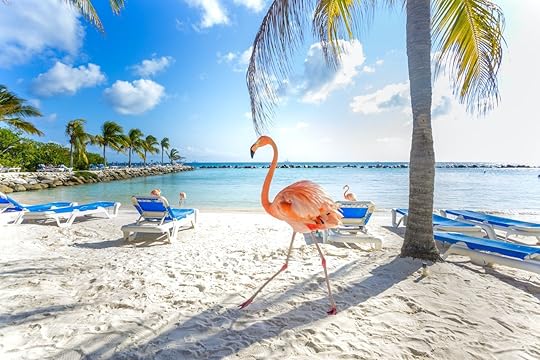
It has been almost eight months to the day since we were first mandated to shelter-in-place. Since then, I have become a stay-at-home-mom/preschool teacher/daycare provider/personal chef/house manager… you get the point. Throughout lockdown, I could feel myself pushing away my wanderlust and telling myself that I did not miss travel — the idea of missing something that seemed so out of reach felt hopeless. As a parent to two small children, I know that our usual family trips would be on pause for a while because of new, and necessary, travel requirements and restrictions. But recently I had the opportunity to travel to Aruba solo, leaving my many quarantine-era jobs and the stress of being in the United States behind. It didn’t take long to realize that escaping to the Caribbean for a few days was the best decision I could have made.

Photo: DiegoMariottini/Shutterstock
After arriving in Aruba, it wasn’t just the much-needed sunshine that began to renew and revitalize my spirit. I realized that I was slowly shedding the social anxiety that had taken over the little voice in my head telling me to fear everyone and everything. Unlike the United States, Aruba and most of the Caribbean have implemented strict new guidelines for entry into the country. And for the first time in months, I felt safe.
Like most destinations that are opening back up to American tourists, a negative COVID test is required to enter Aruba. I had to present my negative results before I could check-in for my first flight out of San Jose, California, and again upon arrival in Oranjestad, Aruba. Face masks are required on all aircraft as well as in the airport, with much stricter enforcement than I had experienced at the beginning of the pandemic. Once in Aruba, there are temperature checks before entering any building, and you must use provided hand sanitizer.
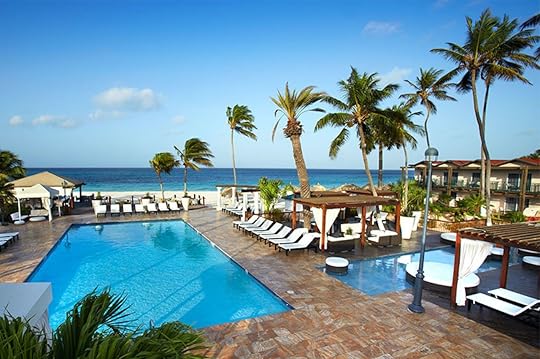
Photo: Divi Aruba All Inclusive Resort
Operating at 20 percent capacity, the Divi & Tamarijn Resort where I stayed required all employees to wear masks, though masks were optional for guests while on the resort. Little things such as the gentlemen who brought my luggage to my room wiping the door handle down and housekeeping placing a seal on the door of my room further cemented my belief that I was in the right place. I was comforted to know that my health was taken seriously, allowing me to truly relax for the first time all year.
Aruba has a population of just over 100,000 people and has been able to keep its COVID numbers very low. The country takes real pride in its tight-knit community and is motivated to keep each other safe. And knowing that visitors to the island have to prove their negative status prior to arrival further demonstrates that Aruba is committed to keeping their island safe while still encouraging tourism to resume. It felt especially nice to be a part of a community that works together in the way that Arubans do. I am disappointed that the same cannot be said for the United States.
The back and forth of what is safe and what is not, should we wear masks or shouldn’t we, etc. is enough to drive a sane person completely nuts. We will see the consequences of this time on the psyches of our country, and especially our children, for generations to come. The Mayo Clinic outlines the effects of stress on the body including sleep problems, fatigue, and even chest pain. I admit that the stress associated with the upheaval of my life has affected me off and on since the pandemic began. That is why my time abroad in Aruba was so special. If you are able to spend any amount of time safely outside of the United States at this time, I implore you to do so. We may never explore the world like we used to, for better or worse, but for the brief time that I was away, it felt good to exhale, relax, and breathe. I also appreciated how much I missed the small things that I took for granted before lockdown.
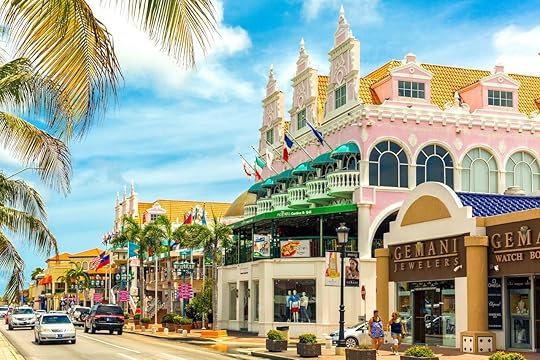
Photo: Mihai_Andritoiu/Shutterstock
I never realized how much I smiled as a way to say hello or acknowledge seeing someone. To me, it seems like everyone is a little angry and tense with a mask on because I can only interpret their emotions from their eyes or any gestures they may choose to make. While in Aruba, it was refreshing to be able to say hello to strangers in passing again. I almost exclusively wore my mask unless I was eating or drinking, but when I was not wearing my mask, I found myself smiling and saying hello to just about everyone I made eye contact with. Not only did I feel safer for my physical health while in Aruba, but my mental health was finally getting the attention it deserved as well. This trip turned out to be a reboot of sorts and now I feel optimistic again that there is a light at the end of this tunnel. It is still a very faint, very far off light, but I can see it again. And traveling outside of the United States is what allowed me to see it. 
More like thisBeaches + IslandsAruba is the most adventure-packed island in the Caribbean
The post I felt safer traveling to Aruba during the pandemic than I have in the United States in months appeared first on Matador Network.

Cool motels in the US
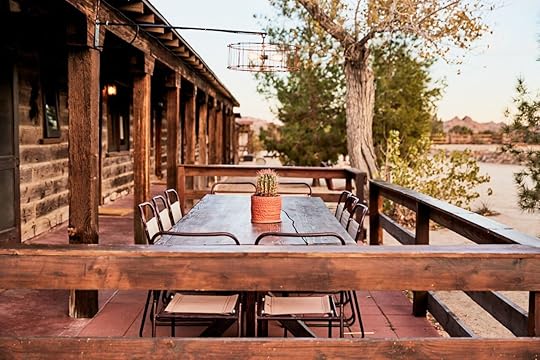
Choosing where to rest your head when driving America was once a straightforward choice: follow the glaring neon “vacancy” sign. But over the last decade many roadside motels have undergone transformations that make planning where to stay on route even more exciting. These motels, located from Massachusetts to Louisiana, are at the forefront of this revival. Proprietors have taken classic structures and redesigned their businesses to offer a high level of service and modern amenities, all while retaining retro kitsch details in style and an authentic experience. This new generation of motels offer more than just a place to rest your head — here are some of the best in the US.
1. The Drifter, New Orleans, Louisiana

Photo: The Drifter Hotel
“To be a Drifter you must leave the old propaganda behind you,” reads the homepage of this motel, which invites travelers to book a room and locals to sign up for a swim club membership, allowing year-round access to the pool, bar, and courtyard.
This New Orleans accommodation screams hipster tryhard in its language, social media, and general aesthetic, but it’s not off-putting by any means. The original motel was built in 1956, and its retro neon “motel” sign and low-rise structure have been retained. What you find today is a redesign from 2017 that bursts with color celebrating local creatives, a cafe serving specialty coffee from La Colombe, and a bar with a busy rotating events schedule.
The interior has a feel of California with pastel palm tree murals and a classic ‘70s wraparound bar in the lobby. The pool area steals attention with its chilled bohemian style. The 20 rooms are arranged around the water in a typical motel setup. At a glance, the rooms resemble exactly what you picture of a classic movie motel, but the interior is more akin to a 1950s-style chic cabana. The Drifter looks and sells itself as too “cool” to be referred to as charming, but there’s still something comforting about this motel’s size and sense of community.
From $139 per night
2. Austin Motel, Austin, Texas

Photo: Austin Motel
The iconic boutique hotelier Liz Lambert — the brains behind the Austin-based Bunkhouse Group — transformed the 1970s Austin Motel in 2017 into what it is today. The classic, key-shaped, somewhat phallic red neon sign hangs out front and the structure of the 41 rooms, and suites have stayed intact. The interior has had a complete redesign with notes like old-school push-button phones, Tivoli alarm clocks, brightly colored red and yellow leather beds, and custom made Voutsa wallpaper.
The restaurant — Joann’s Fine Foods — is stylized after a California diner, and its menu lists house-made Mexican dishes such as tamales with green chorizo and abode pulled pork and picadillo enchiladas with ranchero sauce and green cabbage slaw. The kidney-shaped pool is packed on a hot day and is open to the paying public. They also run events such as their “Full Moon Swim,” which is ticketed and has a DJ from 8 PM.
From $164 per night
3. Harbor Hotel in Provincetown, Massachusetts

Photo: Harbor Hotel
The Harbor Hotel advertises itself as “retro-glam in all the right places,” and the relaxed and colorful accommodation lives up to the slogan. Looking out over Cape Cod, just off Route 6, the motel is steps away from the beach and a perfect place to stop during a coastal road trip, or if you are visiting Provincetown for an event or short vacation. The decor is bright without being obtrusively garish, with furnishings and art in aqua, greens, and orange tones. In true motel fashion, there is a statement pool, which is heated, and a Cabana bar that’s open during the high season. The owners stress that all are welcome to stay in one of their 119 rooms and 10 suites, even your pets, which is ideal for the location.
From $145 per night
4. Blue Swallow Motel, Tucumcari, New Mexico
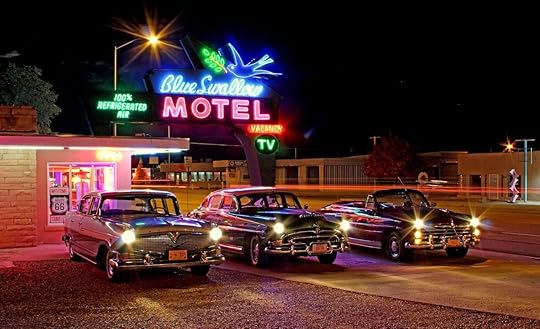
Photo: Blue Swallow Motel
Blue Swallow Motel is a family-run motel on Route 66 that has been open since 1939. The current proprietors get rave reviews for their level of service, and the neon glow, spotless rooms, and attached garages come together to make the motel somewhat of an iconic landmark on the Mother Road. It sets itself apart from local chain hotels with rooms that are packed with character, and guests speak of the sense of community spirit between patrons, many of whom are following Route 6.
From $111 per night
5. Amigo Motor Lodge, Salida, Colorado

Photo: Amigo Motor Lodge
The Amigo Motor Lodge is another conversion from a classic motel. After a lot of blood, sweat, and tears, Texas couple Philip and Kaitlyn opened the beautifully modernized and chic accommodation in Downtown Salida in 2016.
The couple shared, “You get an odd look when you tell people you are leaving town to go run an old motel in the mountains. It usually takes the form of a half-cocked head, a raised eyebrow, or a pause (sometimes all at once) while it sinks in. And rightfully so, I guess. When is the last time you envied the night manager at a dusty motel, checking in road zombies alongside an interstate highway?”
But this place is no “dusty motel.” The rooms are simplistic with block coloring and are dressed in details such as gilded gold lamps and geometric printed furnishings. They also have five retro airstreams that are located on the property which you can rent out. It is their respect for the old characteristics of the motel and the love that the owners have clearly put into this project that makes this place particularly special. Their homepage lists a huge range of outdoor activities and wellness experiences you can enjoy in Salida, and the motel is sure to be super helpful if you are in need of anything during your stay.
From $108 per night
6. Pioneertown Motel, Pioneertown, California

Photo: Pioneertown Motel
Built in 1946 by Roy Rogers as a base for Westerns film stars, Pioneertown Motel has also recently been modernized. Local furniture maker Dan Anderson draws his inspiration from the surrounding desert and his beautiful craftsmanship coupled with adorable Western elements such as handwoven blankets and cowhide rugs make the accommodation a unique find. A slice of SoCal history, the Pioneertown Motel is a perfect place to stay if you are driving through the state, hiking around Pioneertown Mountain Reserve, or if you’ve had one too many at Pappy & Harriet’s — a classic neighborhood BBQ and rock and roll joint.
From $210 per night
7. The Sunset Motel in Brevard, North Carolina

Photo: The Sunset Motel
The Sunset Motel in Brevard hasn’t been majorly upgraded like many on this list, but it vies for a place at the table due to its authenticity. The owner’s boast, “We’re the real deal: clean, comfortable rooms, friendly hometown staff, chairs outside your door so you can visit with neighbors.” The rooms are basic, and the motel’s non-pretentious ‘70s decor is not going to win any awards — it’s a tad kitsch, bright, and slightly dated — but that’s perhaps what makes this roadside motel feel genuine. If you have a group or family, The Sunset has a cottage that sleeps six and a large range of other rooms that sleep between two and four.
From $81 per night
8. Old Santa Fe Inn in Santa Fe, New Mexico
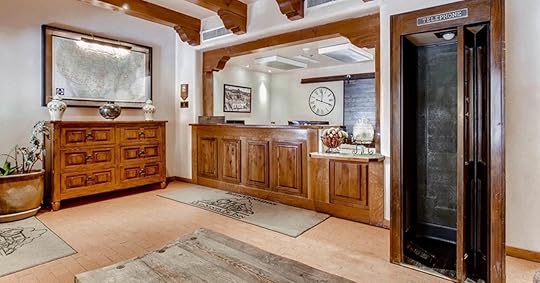
Photo: Old Santa Fe Inn
Now owned by a fourth-generation Santa Fe family, the Old Santa Fe Inn is modern but does not stray too far from tradition. The proprietors are passionate about Santa Fe’s history and diverse culture, and their choice of elegant Southwestern furnishings blended with classic modern amenities make for a comfortable stay. The motel also has a small business center with a 24-hour gym, which will come in handy after your make-your-own-breakfast-burrito buffet for breakfast. If you want to upgrade, the suites are spacious and offer nice added extras like a traditional fireplace and a jacuzzi bathtub.
From $101 per night
9. Hotel Palms in Atlantic Beach, Florida

Photo: The Hotel Palms
Hotel Palms is just off Atlantic Beach — three blocks to be exact — and was originally built in 1947. The modest motel has 11 rooms all with their own aesthetic. The property has an outside-inside ambiance that’s purposefully designed to blend with the local environment and culture. A large outdoor open fire with seating is inviting, and the space is often used for community gatherings for locals and guests.
From $140 per night
10. TOURISTS, North Adams, Massachusetts

Photo: TOURISTS
Set by the Hoosic River, outside of the town of North Adams in the Berkshires, the newly refurbished country boutique hotel TOURISTS is making quite a stir. The motor lodge was originally constructed in the ‘60s, and today the 48-room property has been rethought with a paired-down, comfy-chic style. Modernizations do not clash with the natural surroundings, as their use of raw materials and outdoor space harmonizes beautifully with the riverbank. The proprietors drew inspiration for the name of the property from the motel’s old sign “Tourists Welcome” and their desire to remove stigma from the term.
TOURISTS has an art and adventure coordinator, so just like summer camp, there is an array of activities to sign up to from apple orchard walks and apple squeezing in fall to waterfall medication hikes, forest bathing, and outdoor yoga. The property is also home to a barn built in 1813, which has been converted into a bar and bistro offering a creative cocktail menu and a seasonal food menu run by chef Ty Hatfield. The bar and restaurant are open to the public and are worth visiting even if you don’t end up staying as a guest.
The hotel prides itself on providing a very high standard of service from the booking stage, offering tips on the region as well as a very nice playlist on Spotify to get you in the vacay mood.
From $239 per night 
More like thisNewsAirbnb’s 10 most wish-listed properties around the world
The post Motels are making a huge comeback, and these are 10 of the coolest in the US appeared first on Matador Network.

Montana court to overturn Pendley
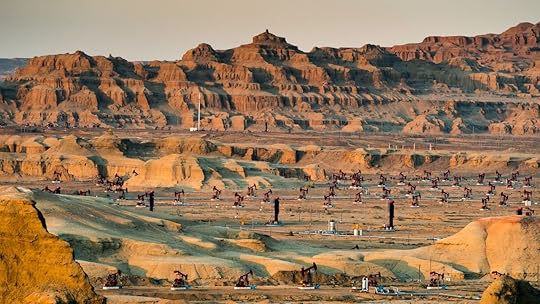
Last month, a Montana-based US District court judge ruled that the Bureau of Land Management’s Acting Director William Perry Pendley had been serving illegally because he had never been confirmed to the post by Congress. The judge said Pendley, who’d been in office 400 days, had served longer than allowed under the Federal Vacancies Reform Act. The order called for Pendley’s removal and questioned the legitimacy of the actions he took as the BLM acting director — among them is opening 95 percent of public land in central Montana to oil and gas leasing.
While the judge’s action is being appealed by Pendley and his legal team, it’s still good news for the environment, since Pendley sought to ignore existing protections and environmental reviews on the lands he plans to lease off. Moreover, Pendley was overseeing the BLM’s relocation from Washington, DC, to Grand Junction, CO, putting it closer to the fossil fuel interests that want to exploit our public lands.
The BLM’s own website says, “The Bureau of Land Management’s mission is to sustain the health, diversity, and productivity of public lands for the use and enjoyment of present and future generations.” By prioritizing oil and gas mining at the expense of everything else, Pendley seems to have gotten the BLM’s mandate all wrong. The Montana judge’s decision puts the focus back on following norms and on recalling whom the BLM is really intended to serve — all of us, not just big business.
Where we are right now, and what to expect going forward
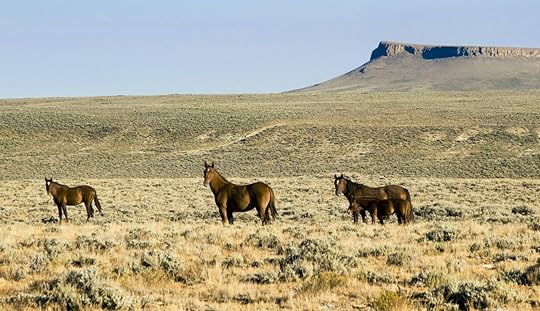
Photo: Jim Parkin/Shutterstock
Since taking over as acting director, Pendley has released multiple Resource Management Plans to prioritize energy development on public land over wildlife and sacred site protections. He has also overseen the move of the BLM to a new headquarters in Colorado. This controversial move put the BLM closer to the majority of the land it manages but even closer to the extraction industry big shots who want to lease that land. The agency signed a lease on its new headquarters this summer, where it literally shares a building with oil and gas companies.
Matador noted in 2019 that the American public has the power to turn any ambitions for increased extraction permitting on its head by holding the agency to account — and federal courts may help in that fight. If enacted, the decision by the Montana court could reverse both the movement of federal employees to Grand Junction and the opening to oil and gas leasing of massive parcels of BLM land in Montana. Whether Pendley’s actions will be overturned is not yet decided and will depend in part on what happens with his expected appeal of the Montana court’s decision. Pendley seems to think his work will stand.
“I have the support of the president,” Pendley told the Wyoming Powell Tribune. “I have the support of the secretary of the interior and my job is to get out and get things done to accomplish what the president wants to do.”
Despite the bravado, the courts still matter. And Pendley appeared to backtrack slightly in an interview with Wyoming Public Media published the following day, saying that, when it comes to signing official documents as the acting director, “The judge said I can’t be doing that. And so, I won’t be doing that.”
He clarified that he now viewed his role as solely being the BLM’s deputy director of policy and programs, meaning Secretary of the Interior David Bernhardt would actually sign anything requiring approval by a top authority. But Pendley still expressed confidence that his forthcoming appeal would result in him being reinstated as acting director even without Congressional approval, simply because he has the support of President Trump and Secretary Bernhardt.
It’s unlikely that Pendley will step down or be forcefully removed from the BLM before the election in November. This puts back into our hands, as voters, the responsibility — and the power — to replace him and to appoint a permanent director who stands with conservation and recreation interests. By electing officials unlikely to appeal the Montana judge’s decision, the harmful actions taken by Pendley have a better chance of actually being reversed.
Pendley’s history of favoring extraction over conservation
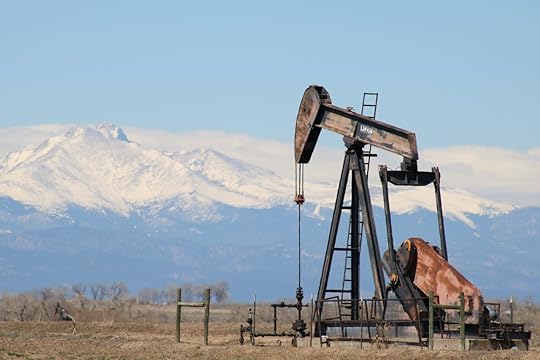
Photo: Rexjaymes/Shutterstock
Pendley has a long history of attacking conservationists and even Native American tribes. In 2016, Pendley published an article in the National Review to argue his belief that “the founding fathers intended all lands owned by the federal government to be sold.” Though he has since stated that his views have changed, his actions as a public official — including the above-mentioned plans to lease 95 percent of BLM land in Montana to fossil fuels companies — indicate otherwise.
This is nothing new for Pendley. When running the conservative Mountain States Legal Foundation, Pendley advocated for scrapping clean air and water regulations and for selling federal lands or opening them to extraction leasing and development. He has also defended private developers seeking to develop on Native lands and advocated for the removal of protections of sacred Native sites, saying in his 2006 book Warriors for the West, “The day may soon come when Congress and the Supreme Court will be asked to take a serious and very hard look at whether there remains a need for the federal government’s policy of paternalistic protection,” referring to Native tribes as little more than “associations of financial convenience” because of the US government’s treaty agreements to support them.
How to make your voice heard

Photo: Andrey_Popov/Shutterstock
In lieu of making financial contributions to conservation groups advocating for public lands protections — though that is an option if you are in a position to do so — citizens can make their voices heard in a few ways. First and foremost, vote on or before November 3. By electing public officials who value public lands protections, we can ensure that private interest and corporate profit don’t guide public policy at the BLM. Voting for public lands advocates covers the entire ticket, not just which party holds the White House — and this is a good thing, because citizens often have more sway in local matters than in national affairs. The nonprofit group Protect Our Winters put together a comprehensive guide to all candidates’ stances on environmental issues to help voters know whom to support based on where they live.
You can sign the country-wide Protect Our Public Land petition, operated by the Outdoor Alliance, which is an attempt to bring recreationists of all stripes together to advocate for public lands protection. Your signature voices your support of the organization’s ongoing work with businesses and the governors of western states, where the vast majority of BLM land is located, to work across political ideologies toward conservation-minded solutions.
Another thing you can do, not just now but always, is to recreate on public lands responsibly and to patronize nearby businesses. Getting out on trails and even into the backcountry is a voice for conservation in itself. Seeing is believing when it comes to conservation. The more people experience our public lands, the more they are likely to want to protect them. As big-mountain snowboarder and Protect Our Winters founder Jeremy Jones told Matador in 2018, “It’s very tough to gain that perspective from your hometown, and we need that one-world perspective more than ever.”
Finally, even after the election, you can be vocal and engaged with your local representatives. A politician’s job is to represent constituents — that would be you — and to bring their concerns forward. Politicians’ views can and should change throughout their careers to better represent their voters as public opinion shifts, or else they get voted out of office. So don’t give up on emailing and calling your representatives. When the voice of conservation is louder than the voice for extraction, broad-spanning decisions from the federal level are easier rebuffed and challenged at the local level. When those voices are louder in Washington, people like Pendley aren’t appointed to public leadership roles in the first place. 
More like thisNewsPaper bags are not a sustainable alternative to plastic. Here’s why New Jersey voted to ban them.
The post The BLM is here to serve our public lands, not just big business appeared first on Matador Network.

Amsterdam flower boxes on bridges
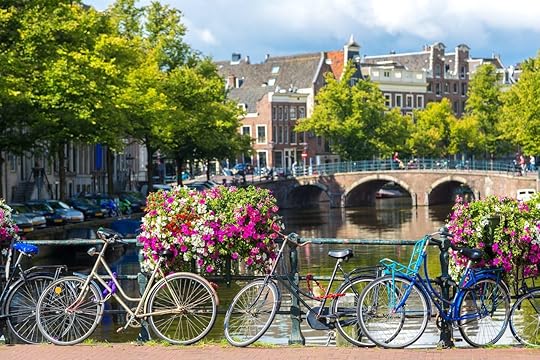
In Amsterdam, bicycles are everywhere, even chained to the city’s many canal bridges. While this may be practical for cyclists, it’s not exactly aesthetically pleasing or helpful when it comes to street congestion. Since chained bikes often mar canal views and clog sidewalks, the city has decided to place wooden plant and flower baskets on the busiest canal bridges to encourage cyclists to look elsewhere to park their bikes.
According to a spokesperson from Amsterdam’s city council, “Due to the large number of bicycles parked at the bridge railings, pedestrians no longer fit on the narrow sidewalks and walk on the roadway. This creates unsafe situations.”
The issue isn’t surprising. Amsterdam has 478 miles of cycling lanes, and more bikes than people. With the onset of the pandemic, biking has become an increasingly popular mode of transportation as public buses fell out of favor. This rise in cycling has also led to congested bike lanes, which have become a safety issue.
Frits van Bruggen, director of the cyclists’ association Algemene Nederlandse Wielrijders-Bond (ANWB), told the NL Times, “Before the corona crisis, we already had full cycle paths and more and more two-wheelers at different speeds. E-bikes, e-scooters, bicycles, cargo bikes also in electric, racing bikes, and the e-scooter. Not all of them can ride side by side. I am 100 percent sure that we will have even more victims because we cycle and take the car more because we no longer dare to use public transport. How much more, I do not know.” 
More like thisArt + ArchitectureHow to dive in to Amsterdam’s vibrant street art scene
The post Amsterdam will use flower boxes to dissuade cyclists from chaining bikes to bridges appeared first on Matador Network.

Italy’s new 87-mile bike trail
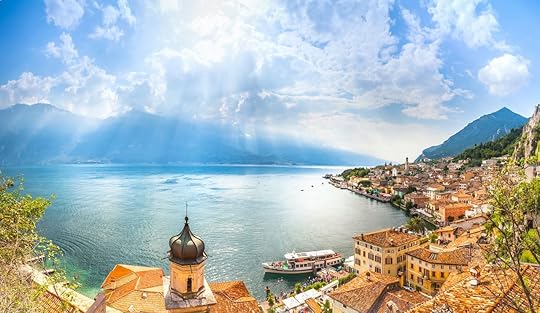
There’s another reason to look forward to traveling to Italy once international travel resumes. An 87-mile-long bike trail is heading to Italy’s largest lake, giving cyclists a new way to experience beautiful Lake Garda.
The Garda by Bike project has been underway for the past few years, and is scheduled to be completed by 2021. The trail is being built using both existing cycling tracks and new paths taking riders through the regions of Lombardy, Trento, and Veneto. The trail will also link with the Eurovelo Route 7 and Route 8 cycling routes.
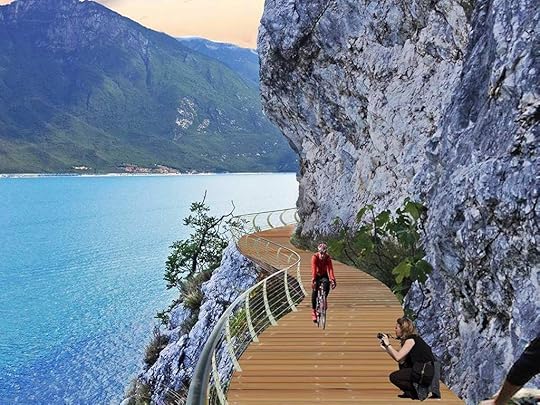
Photo: ATT – Società d’ingegneria
The bike loop is intended for all skill levels. There are no steep grades and all bikes should be able to handle the boarded trail with ease. One section of the trail is already open — a 1.2-mile stretch from Capo Reamol on the lake’s western shore that runs alongside the rugged cliffs by the water.
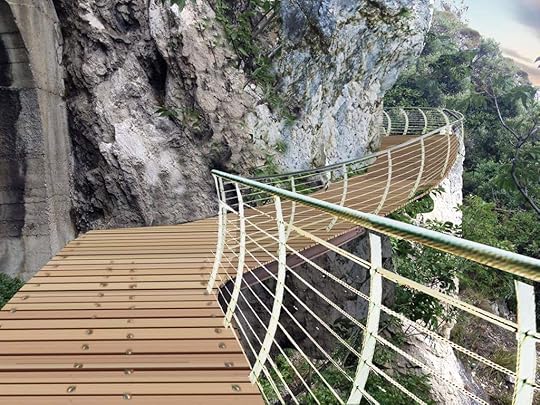
Photo: ATT – Società d’ingegneria
The completion of the bike trail will coincide nicely with the current thirst for outdoor-oriented activities as a result of the COVID-19 pandemic. 
More like thisCycling5 stunning car-free cycling routes to really explore Italy
The post An epic new bike trail will circle Italy’s largest lake appeared first on Matador Network.

Brittney Woodrum climb for charity
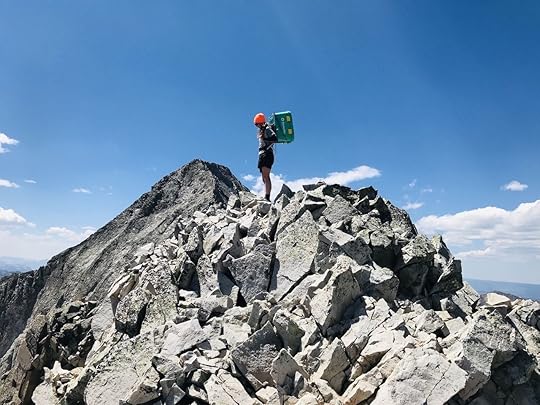
Most people have been spending the pandemic baking bread or watching Netflix. Kentucky native and passionate thru-hiker Brittney Woodrum spent it climbing all the 14,000-foot (aka “fourteeners”) mountains in Colorado.
While Woodrum — like all of us — was forced to put her life plans on hold this year, she decided to give back to the community by partnering with the nonprofit organization ShelterBox to help provide emergency shelter and tools (like hand soap) for displaced families facing the threat of COVID-19 around the world. As an ambassador for ShelterBox, she was inspired to put her love of the outdoors to good use and climb some of the most challenging mountains in the US to raise funding — and she did it all while carrying the organization’s iconic turquoise box (weighing 14 lbs) on her back.
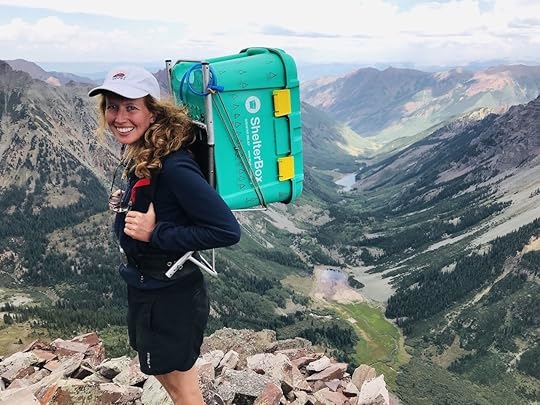
Photo: ShelterBox
At 27 years old, Woodrum climbed all 58 of Colorado’s 14,000-foot peaks in just 78 days, often camping or sleeping in her car. In pursuit of this achievement, she raised $85,000 from friends, family, and strangers.
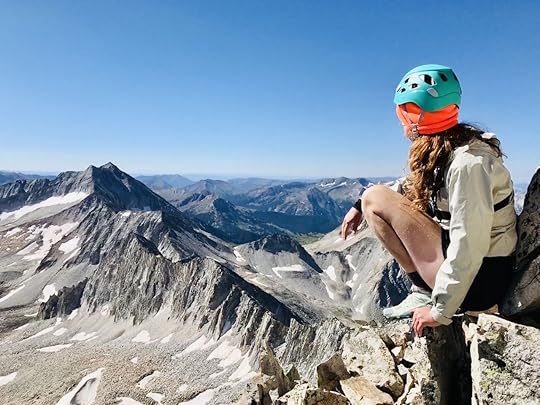
Photo: ShelterBox
According to Woodrum, she didn’t expect to raise more than $5,000, but “word seemed to spread very quickly and a lot of people were equally impassioned by ShelterBox’s mission and what I was doing. I have an immense amount of gratitude to everyone who came out to support me both virtually & physically.”
Even though she has summited all 58 fourteeners, it’s not too late to make a donation to the project and help Woodrum reach $100,000 in raised funds. 
More like thisHikingThese US hikes are actually better in cold weather
The post Passionate hiker climbed 58 14,000-foot mountains to raise money for COVID-19 relief appeared first on Matador Network.

Air New Zealand Mystery Breaks plan
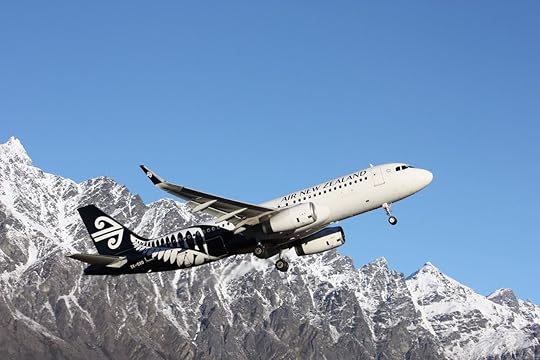
Instead of pretending everything is normal in the world of travel, Air New Zealand is creatively capitalizing on some of the uncertainty. The airline is bringing back its Mystery Breaks program, which allows travelers to pay a flat fee to book a whole vacation package with Air New Zealand, but there’s a catch — they won’t know their destination until two days before departure. Normally that might sound too stressful to be worth it, but right now, when people are eager for any vacation at all, it might just be crazy enough to work.
According to the promotion’s website, “Take an Air New Zealand Mystery Break and who knows where you’ll end up. It could be any one of the popular destinations on the Air New Zealand domestic network. The mystery won’t be revealed until two days prior to travel. You’ll fly Air New Zealand to your mystery destination, pick up your Avis rental car or transfer, then check in to your Accor hotel. Then it’s up to you. Go exploring, or just kick back and relax.”
Passengers can choose from three tiers — Great, Deluxe, or Luxury — which determine the quality of hotel and rental car, and select the dates they want to travel and one destination they’re definitely not interested in going. The packages start at 599 New Zealand dollars per person for two nights, but increase based on the option you choose. The 20 possible destinations are all domestic.
Since New Zealand’s borders are closed to most due to the COVID-19 pandemic, and travel out of the country is also severely restricted, the Mystery Breaks program gives travelers a way to go on an adventure. 
More like thisWildlifeThe best places to see New Zealand’s unique and wonderful wildlife
The post Air New Zealand is offering Mystery Breaks to boost domestic travel appeared first on Matador Network.

Dublin Airport’s response to tweet

Airports aren’t usually a source of calm, but the Dublin Airport is doing its best to cheer up one Twitter user. On Friday, Edmund Burke tweeted, “I am not ok. Feeling rock bottom. Please take a few seconds to say hello if you see this tweet. Thank you.” His bio also stated that he’s an aviation lover. Seeing the post, the airport reached out to attempt to brighten his day.
I am not ok. Feeling rock bottom. Please take a few seconds to say hello if you see this tweet. Thank you.
— Edmund O'Leary (@emerald1910) October 16, 2020
“Hi Edmund,” they wrote, “you are not alone. So many people are feeling exactly that way at the minute. Never forget that you are loved & there are people who care about you. We see you like 747s; here’s one just for you, along with a picture of dawn in Dublin. Sending you hugs from back home.”
Hi Edmund, you are not alone. So many people are feeling exactly that way at the minute. Never forget that you are loved & there are people who care about you. We see you like 747s; here’s one just for you, along with a picture of dawn in Dublin. Sending you hugs from back home. pic.twitter.com/x2TyI06uD7
— Dublin Airport (@DublinAirport) October 17, 2020
Paul O’Kane, a spokesperson for Dublin Airport, told Travel & Leisure that the airport team was touched by Burke’s tweet. “On that basis,” he said, “we responded with a personal message for Edmund and a couple of images — a vintage picture of an Aer Lingus Boeing 747 at Dublin Airport, and an image of dawn over Dublin Bay — in the hope that it might in some way give him a tiny lift. We chose dawn as the sun always rises, even after the darkest of nights.”
Burke’s tweet has since received around 302,000 likes, and over 100,000 comments — many of which are notes of support and encouragement.
Burke revealed to the Sunday Times that he had been struggling with his mental health due to the pandemic and unemployment, but the airport’s tweet lifted his spirits. “I love jumbo jets,” he said. “I was really touched by that tweet.” 
More like thisAirports + Flying13 airports where you can get tested for COVID-19 in the US
The post Dublin Airport’s response to this tweet will melt your heart appeared first on Matador Network.

October 19, 2020
Colorado mountain towns
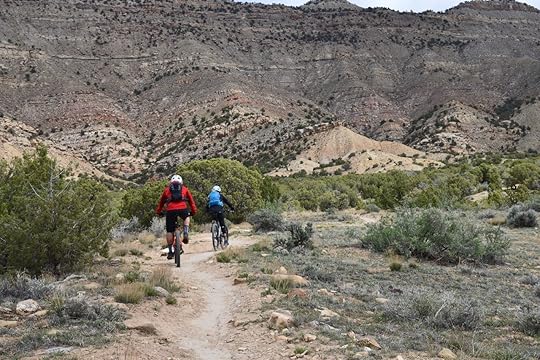
A kayaker rips through a stretch of whitewater, using a rapid to invert herself into a twist before realigning and paddling downstream. On the side of the river, a small group of onlookers cheers the move. Some are locals stopping for a mid-ride rest while pedaling their bicycles across Colorado’s Vail Valley. Others are visitors from Denver, witnessing freestyle kayaking for the first time.
This sounds like any summer Saturday in the popular resort towns of Vail or Breckenridge — but it’s actually the small town of Eagle, 30 miles west of Vail. There, Eagle River Park is a new whitewater park developed as a destination for river runners and spectators on a stretch of the Eagle River. Eagle, a town of 7,000 residents, has long been a bedroom community for retirees, resort workers, and others wanting to live in the mountains but not within the often over-fabricated — and very expensive — grasp of resort communities.
Mountain towns like Eagle become destinations of their own
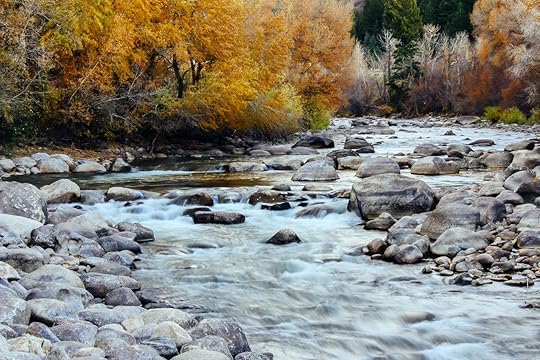
Photo: Jonathan Melot/Shutterstock
In recent years, mountain towns across Colorado’s I-70 corridor have seen major public and private investment in their recreation offerings and hospitality. The goal, ultimately, is to lure visitors from Denver and out of state who care more about seeing the mountains than being seen in them. Certainly, wealthy families seeking a chic mountain getaway will be better served in Aspen or Vail since the downtowns of Eagle, Avon, and Fruita don’t have Patagonia storefronts or restaurants run by celebrity chefs. But those places are where the locals live and, increasingly, where the diehard outdoor recreators go for destination trips.
The Eagle River Park is a competition-ready whitewater kayak course created by whitewater design firm S20 Design & Engineering. It features man-made rapids placed in strategic locations to create features for kayakers, stand-up paddleboards, tubers, and other water users. The park is built for both water users and the spectators who come to watch them, with seating and a fire pit area.
“What we’ve created here is something here for everybody that paddles, whether you’re a beginner at the downstream end or an expert who wants to try those upper features,” Scott Shipley, President of the S20 Design & Engineering, said about the development in a YouTube video.
The park is part of a larger trend, the newest highlight of Eagle’s easy access to outdoor recreation that includes hiking, backcountry skiing, camping, and more than 100 miles of mountain bike trails in the recently updated Hardscrabble Mountain trail system. All of this combines to give tourists to the Vail Valley an option for a quieter, more authentic mountain town experience than they’d find in the resorts of Vail proper. It also helps the town grow its own economy around outdoor recreation without full dependence on the larger resorts.
Avon is a ski town with local charm
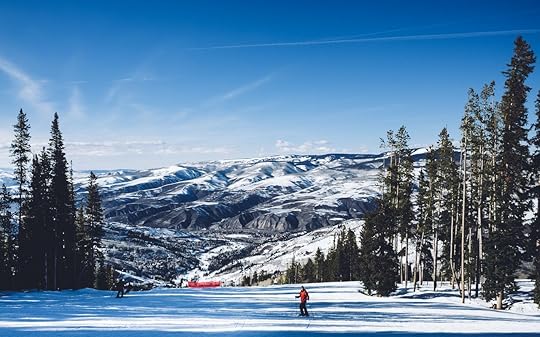
Photo: jweller/Shutterstock
Closer to Vail even than Eagle, the mountain bike and hiking trails of the West Avon Preserve stretch above the town of Avon, providing bird’s eye views of the valley below and the ski trails of the luxurious Beaver Creek Mountain Resort further in the distance. Despite being in between two high-end resort towns, Avon retains a local charm — and is using it to bring in travelers who want the best outdoor experience. Cyclists clad in jerseys and spandex sit over pints of beer at Ein Prosit, a German-themed beer cafe in the heart of town.
Across the street is a new take on mountain lodging opened in the summer of 2020: the Cohabit Pod Hotel. “We offer guests a unique and affordable alternative to traditionally overpriced hotels,” the hotel says via its website. “We merge the relaxed, social elements of a hostel with the privacy of a boutique hotel.”
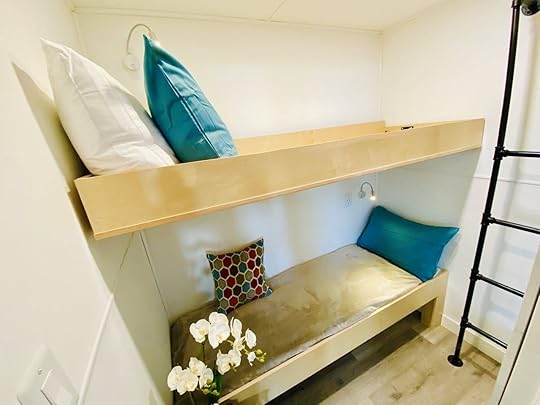
Photo: Cohabit
Cohabit is small and cozy by definition. Its rooms, called “pods,” are less than 50 square feet in size. Rather than a king-size bed, they feature a bunk set up with two single mattresses and nearly everything in the room lies within an arm’s reach. Rates around $135 per night in mid-winter are a fraction of what you’d find in a resort town, and though there’s no ski-in, ski-out access, you can hop on the free Vail Valley Eco Transit a short walk away; the bus drops off at multiple points within a moment’s walk of the resort’s chairlifts.
“Cohabit’s minimalist lodging is for the experiential traveler who values connection and community over pricey hotel amenities,” the company says.
Fruita is Colorado’s mountain biking capital
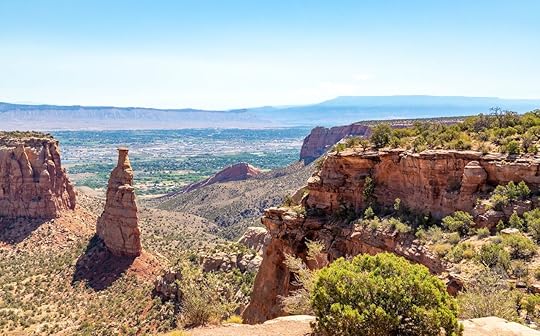
Photo: mark higgins/Shutterstock
In addition to diverse recreation and lodging offerings, the diversity of Colorado’s natural landscape itself is helping small towns along I-70 bring see increased visitor numbers. For mountain bikers, nowhere in Colorado is on par with the high-desert town of Fruita. A further two hours west of Eagle and 90 miles east of Moab, Utah, the Slickrock mountain biking hotspot and national parks hub that draws more than three million tourists annually, Fruita had historically been an agricultural community.
In the 1990s, close work between the Bureau of Land Management, which manages most of the terrain open to mountain biking around the town, local riders, and city officials brought to life two biking trail systems that have slowly earned their place as a top destination among America’s dedicated mountain bikers. The 18 Road Trails wind through the North Fruita Desert just minutes from town, including the 28-mile Edge Loop, an EPIC Ride, as certified by the International Mountain Bicycling Association. The Kokopelli Loops circle the McInnis Canyon National Conservation Area, overlooking the Colorado River. This trail system is the starting point of the 150-mile Kokopelli Trail, which passes from Fruita to Moab.
“Fruita is rad because visitors feel like locals,” City Manager Mike Bennett told Matador via email. “The reason being — Fruita is not an overpriced, overcrowded destination. It is a community first, surrounded by world-class outdoor adventure and genuine, welcoming locals. There is so much surrounding terrain that guests of all skill levels have many options.”
Fruita is also the put-in point for rafting the Ruby Horsethief Canyon stretch of the Colorado River and offers in-town paddling on the river as well. Dispersed camping and reservable campgrounds surround the town, including within the Colorado National Monument, a popular tourist draw even before the recent mountain biking boom. For those not wishing to camp, Bennett says, “We have a variety of hotels and short-term rentals.”
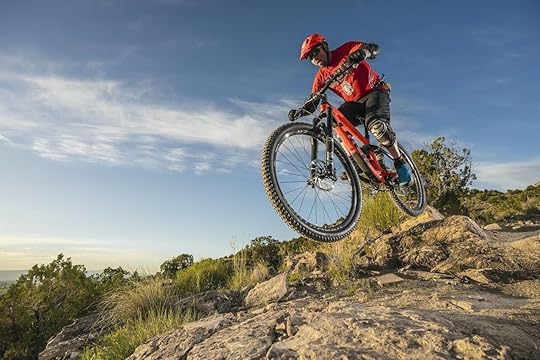
Photo: Landon Monholland + Over The Edge Sports
Two local businesses serve as hubs for the town’s mountain bike community for visitors and locals. The Hot Tomato is a pizzeria and taproom run by Jen Zeuner and Anne Keller, both diehard cyclists themselves. The joint was the subject of the documentary film Life of Pie, which chronicles the journey of Zeuner and Keller alongside the town’s growth as a mountain bike destination.
The second is Over The Edge Sports, a local bike shop that has advocated for, worked to develop, and promoted the area’s singletrack trails since it opened its first location here in 1996. There’s no better place to stop for local knowledge on either of the two prominent trail systems. “The Bookcliffs are our quintessential flow trails with ridgeline descents that you’ll tell stories about for years,” says Landon Monholland of Over The Edge Sports. “[The] Kokopelli Loops are technical and flowing singletrack on cliffs above the Colorado River.”
No matter which system you ride, the local trails are, “Some of the most scenic singletrack on the planet,” says Monholland. “Good trails create good stories, and Fruita and the Grand Valley’s trail systems each have a lot to tell.”
For these three towns — Eagle, Avon, and Fruita — and so many more across the Intermountain West, outdoor recreation is playing a key role in developing long-term economic stability. While Fruita’s visitor numbers are a fraction of nearby Moab, city data showed more than 375,000 visitors to the town in 2017. As Monhalland says, “Mountain biking saved [Fruita] from bankruptcy and put it on the international map. It’s a bucket list place with amazing riding, great food, and ‘locals’ who actually live here and don’t mind sharing what we have.” 
More like thisCyclingColorado’s new Palisade Plunge is the ultimate mountain bike mega-trail
The post Beyond the resorts, Colorado’s lesser-known mountain towns are the next big destinations appeared first on Matador Network.

Matador Network's Blog
- Matador Network's profile
- 6 followers



